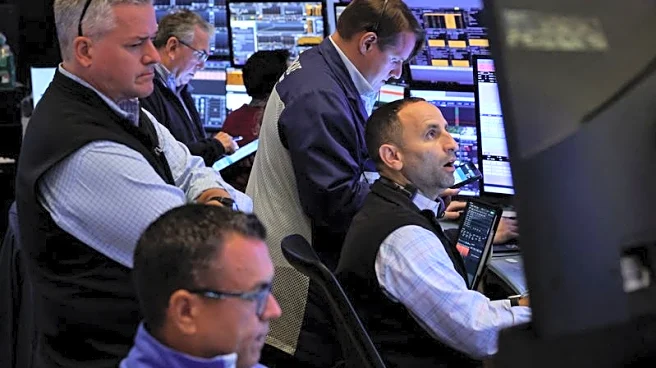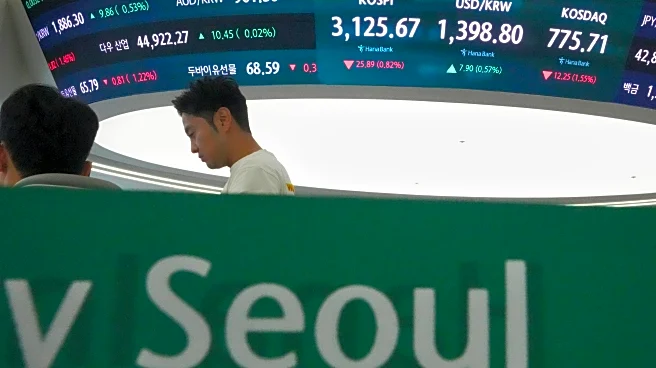Rapid Read • 7 min read
Wall Street's main indexes are poised for a higher opening on Friday as investors anticipate Federal Reserve Chair Jerome Powell's speech at the Jackson Hole Symposium. This comes after a series of losses, with the S&P 500 and Nasdaq experiencing their worst weekly performance of the month. Powell's address is expected to provide insights into the Federal Reserve's interest rate strategy, particularly in light of recent economic data and tariff impacts. Traders are currently predicting a 69.5% chance of a 25-basis-point rate cut in September, a decrease from 85.4% a week ago. The market's focus is on Powell's cautious approach, as he previously indicated a willingness to lower rates if unemployment rises. Meanwhile, technology stocks have faced significant selloffs, contributing to the market's downturn.
AD
The anticipation surrounding Powell's speech underscores the critical role of Federal Reserve policies in shaping market expectations and economic stability. A potential rate cut could provide relief to markets and signal the Fed's commitment to supporting economic growth amidst tariff pressures. However, mixed signals from other Fed officials suggest uncertainty about the likelihood of a rate reduction. The performance of major indexes like the S&P 500 and Nasdaq reflects broader investor sentiment and economic health, with technology stocks being particularly vulnerable. The outcome of Powell's address could influence investment strategies and economic forecasts, impacting stakeholders across various sectors.
Following Powell's speech, market participants will closely monitor any shifts in the Federal Reserve's policy stance. A clear indication of a rate cut could lead to market rallies, while ambiguity might sustain current volatility. Additionally, upcoming economic data releases and earnings reports from major companies will further shape market dynamics. Investors will also watch for reactions from other Fed officials and potential adjustments in rate cut probabilities. The broader economic implications of tariff impacts and consumer spending trends will continue to be key factors in market assessments.
AD
More Stories You Might Enjoy












